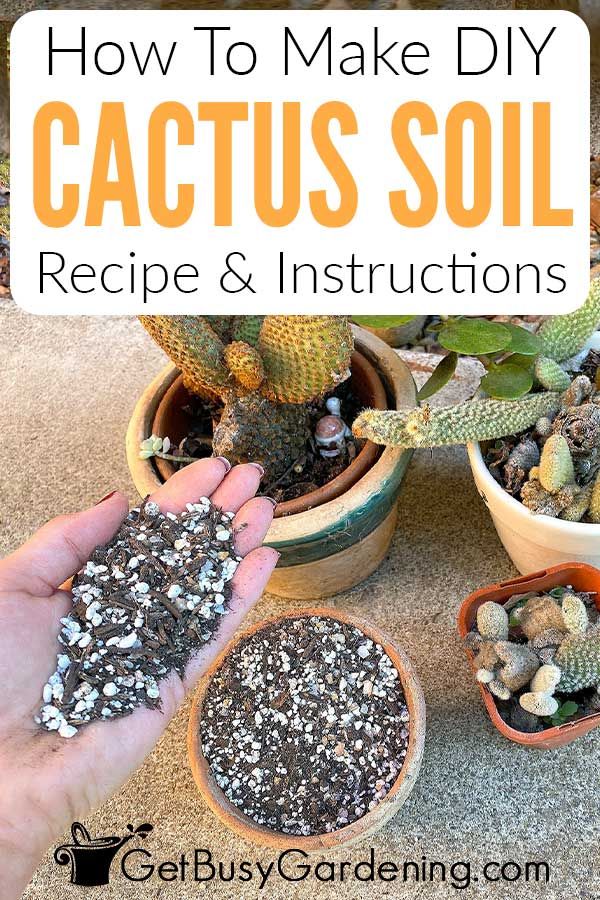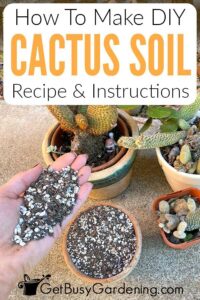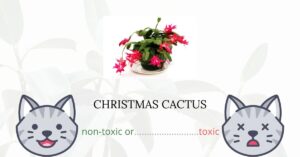When cultivating cacti, one of the most pivotal aspects to consider is the soil mix. Cacti, being succulents, have adapted to thrive in arid environments where standard potting soils may retain excessive moisture, causing detrimental root rot. Crafting an appropriate soil mix is crucial for ensuring the health and longevity of these fascinating plants. This guide will explore the ideal soil recipe, ingredients useful for cactus health, and tips for maintaining the optimal growing medium.
Understanding the Unique Needs of Cacti
Cacti belong to the family Cactaceae and are primarily found in dry, desert regions. Their physiology is remarkably different from that of other houseplants, which rely on moisture retention. Cacti require a well-draining soil that mimics their natural habitat, characterized by a blend of materials that allows air circulation and water expulsion. The primary objective with cactus soil is to ensure that it is loose enough to facilitate drainage while also providing some nutrients to support their growth.
Ingredients for the Perfect Cactus Soil Mix
Creating a bespoke soil mix starts with understanding the core components that contribute to an optimal environment for cacti. Generally, a good cactus soil mix can be synthesized from three primary ingredients: potting soil, coarse sand, and perlite or pumice. Each component plays a unique role in moisture management and aeration.
Potting Soil: The Foundation of Nutrients
While cacti are not heavy feeders, a base of quality potting soil is essential. Look for a potting mix that is lightweight and free of additives like fertilizers, as too much nitrogen can encourage unwanted growth. Choose a mix containing organic matter, as it provides a sustainable source of nutrients over time while enhancing the soil’s structural integrity.
Coarse Sand: Enhancing Drainage
Cacti require a drainage system that mimics the dry desert beds in which they naturally grow. Incorporating coarse sand into your mix improves drainage considerably, allowing excess water to escape swiftly. It is advisable to use horticultural-grade sand, which is clean and free of contaminants that could impede the growth of your plants. Avoid fine sands, as they can compact over time, undermining the soil’s aeration properties.
Perlite and Pumice: Optimal Aeration Tools
Both perlite and pumice are integral to maintaining a light, airy soil structure. Perlite, a volcanic glass that has been heated to create porous particles, promotes aeration while ensuring that the soil mix does not become dense. Alternatively, pumice, a naturally occurring volcanic rock, provides similar benefits and heavy weight that can aid in keeping the plant anchored. Aim to include either of these materials to enhance aeration within your cactus soil mix.
A Simple Cactus Soil Recipe
Combining the previously mentioned elements can yield an excellent soil mix for cacti. A popular ratio to consider is two parts potting soil, one part coarse sand, and one part perlite or pumice. This recipe allows for adequate drainage while ensuring that the nutrients from the potting soil can be accessed by the plant roots. Adjustments can be made depending on specific cactus varieties, as some species may prefer different soil characteristics.
Adapting Soil for Different Cactus Species
While the basic soil mix serves as a solid foundation, recognition of the diverse nature of cacti species is vital. Some cacti thrive in exceptionally drainable mixes, while others may require slightly more organic material. For instance, desert-dwelling varieties like the Saguaro appreciate a leaner mix, while jungle cacti, such as the Christmas Cactus, thrive in mixes with a tad more moisture retention. Tailoring your soil mix to the specific requirements of your plants can lead to a healthier growth cycle.
Maintaining Cactus Soil Quality
Even with the ideal soil mix in place, ongoing maintenance is essential for long-term success. Ensure that your cacti pots have drainage holes to prevent water from pooling at the base, which can lead to root rot. Additionally, check the moisture levels of your soil regularly. For most cacti, allowing the soil to become dry to the touch between waterings is ideal. During the winter months, when many cacti are dormant, reduce watering further to avoid over-saturation. Periodically refreshing the top layer of soil can help rejuvenate nutrients and maintain an ideal environment.
Conclusion: The Path to Thriving Cacti
By understanding the unique needs of cacti and utilizing an appropriate soil mix, you set the stage for healthy plant growth. A well-crafted soil not only enables successful cultivation but also enhances the aesthetic value of your landscape. Embrace the principles of good drainage and aeration, and tailor your approach to suit diverse cactus types. With a little care and attention, your cacti will thrive, bringing joy and beauty into your home.





Leave a Comment